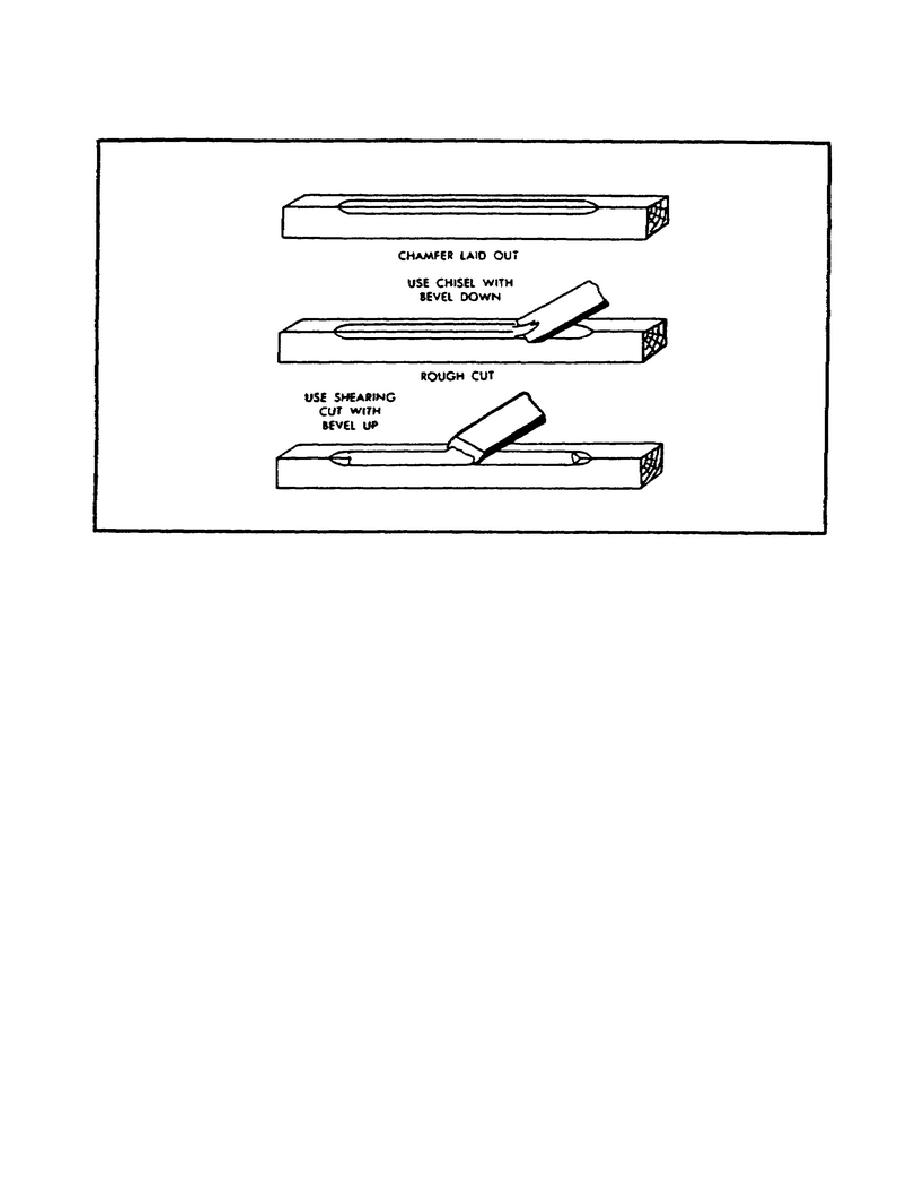
USE/CARE OF HANDTOOLS & MEASURING TOOLS - OD1621 - LESSON 2/TASK 2
FIGURE 85.
CHAMFERING WITH A CHISEL.
(f) To Chisel a Round Corner. To cut a round corner on the end of
a piece of wood, first lay out the work and remove as much waste as possible
with a saw (figure 86 on the following page). Use the chisel with the bevel
side down to make a series of straight cuts tangentially to the curve. Move
the chisel sideways across the work as it is moved forward.
Finish the
curve by paring with the bevel side up. Convex curves are cut in the same
manner as a round corner.
(g) To Cut a Concave Curve. Remove most of the waste wood with a
coping saw or a compass saw.
Smooth and finish the curve by chiseling
(figure 86) with the grain, holding the chisel with the bevel side down.
Use one hand to hold the chisel against the work. Press down on the chisel
with the other hand and, at the same time, draw back on the handle to drive
the cutting edge in a sweeping curve. Care must be used to take only light
cuts or the work may become damaged.
(h) Vertical Chiseling.
Vertical chiseling (figure 87 on page
111) means cutting at right angles to the surface of the wood, which is
horizontal.
Usually it involves cutting across the wood fiber, as in
chiseling out the ends of a mortise or making a gain on stopped dado joints.
When vertically chiseling across the grain, a mallet may be used to drive
the chisel. A mallet is necessary when chiseling hardwood. Use a
109



 Previous Page
Previous Page
